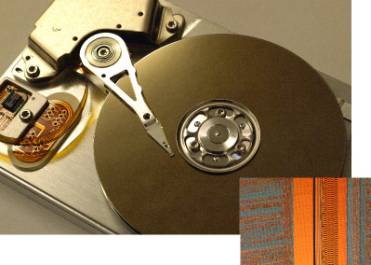Ferrofluids for Domain Observation
For domain observation work the particles are attracted to the region of maximum field gradient by the force exerted on them due to field gradients which exist at the domain walls. The field gradient causes the particles to aggregate at the domain walls which manifest themselves as dark lines when viewed by visible light.
The separation between the adjacent lines is roughly equal to the size of a domain, the dark line being roughly equal in width to a domain wall, i.e. the transition width between adjacent domains.

Domains on surface of thin film
Application
Liquids Research Limited produce fluids for both thin film and flexible magnetic media, crystal and amorphous alloys, garnets, steels, and geological rocks. With the DK and DH range of fluids domain observation is quick and simple.
Preparation
The ferrofluid is applied to the surface of the sample by the use of a glass plate or Q-tip, or alternatively the sample may be dipped in the ferrofluid. Once the fluid has evaporated the domain patterns may be observed under a microscope (x100 magnification) using reflected visible light. For best viewing the light source should be at an angle of 30-45º. An infrared lamp may be used to accelerate the evaporation of the fluid. The domain resolution will depend upon the density of the ferrofluid. The ferrofluid should be normally diluted to typically 80 parts dilutant to 1 part ferrofluid. The dilution ratio may be varied to achieve the necessary resolution.
Domain observation fluids come prepared with a wetting agent to reduce surface tension on recording media caused by a surface coating of lubricant which tends to make the wetting of the media difficult.
All domain observation fluids have a moderate to high vapour pressure, for this reason fluids should be kept in a closed bottle at room temperature. Any fluid diluted for use should not be stored as it will become unstable relatively quickly.
| Water based |
Ms (Gauss) |
Median Particle size (nm) |
Viscosity (Cp) |
| DKS1S9
|
80 |
10 |
<5 |
| Hydrocarbon based |
Ms (Gauss) |
Median Particle size (nm) |
Viscosity (Cp) |
| DHYS1-A
|
80 |
6 |
<5 |
| DHYS1-B |
80 |
8 |
<5 |
| DHYS1-C |
80 |
10 |
<5 |